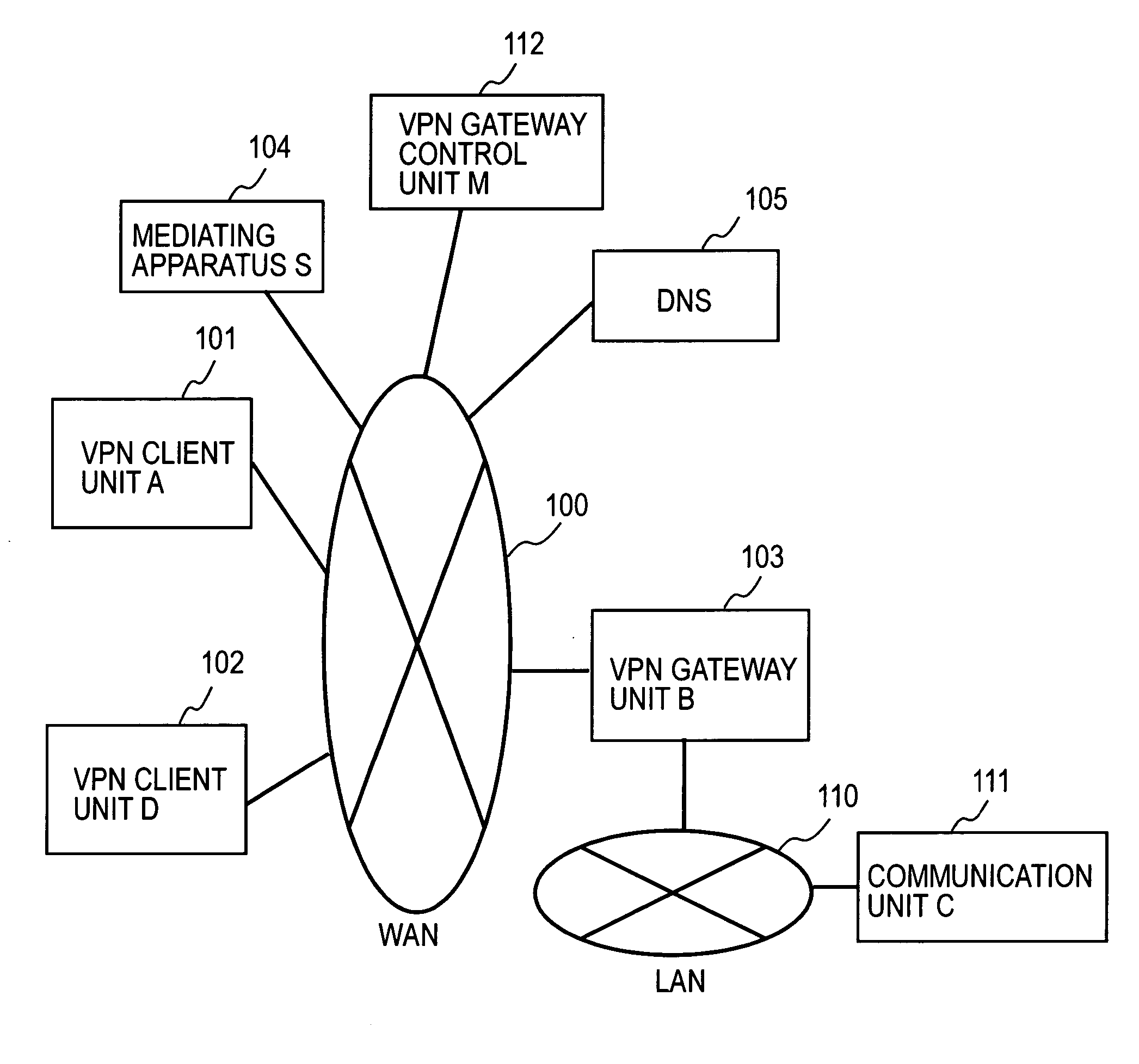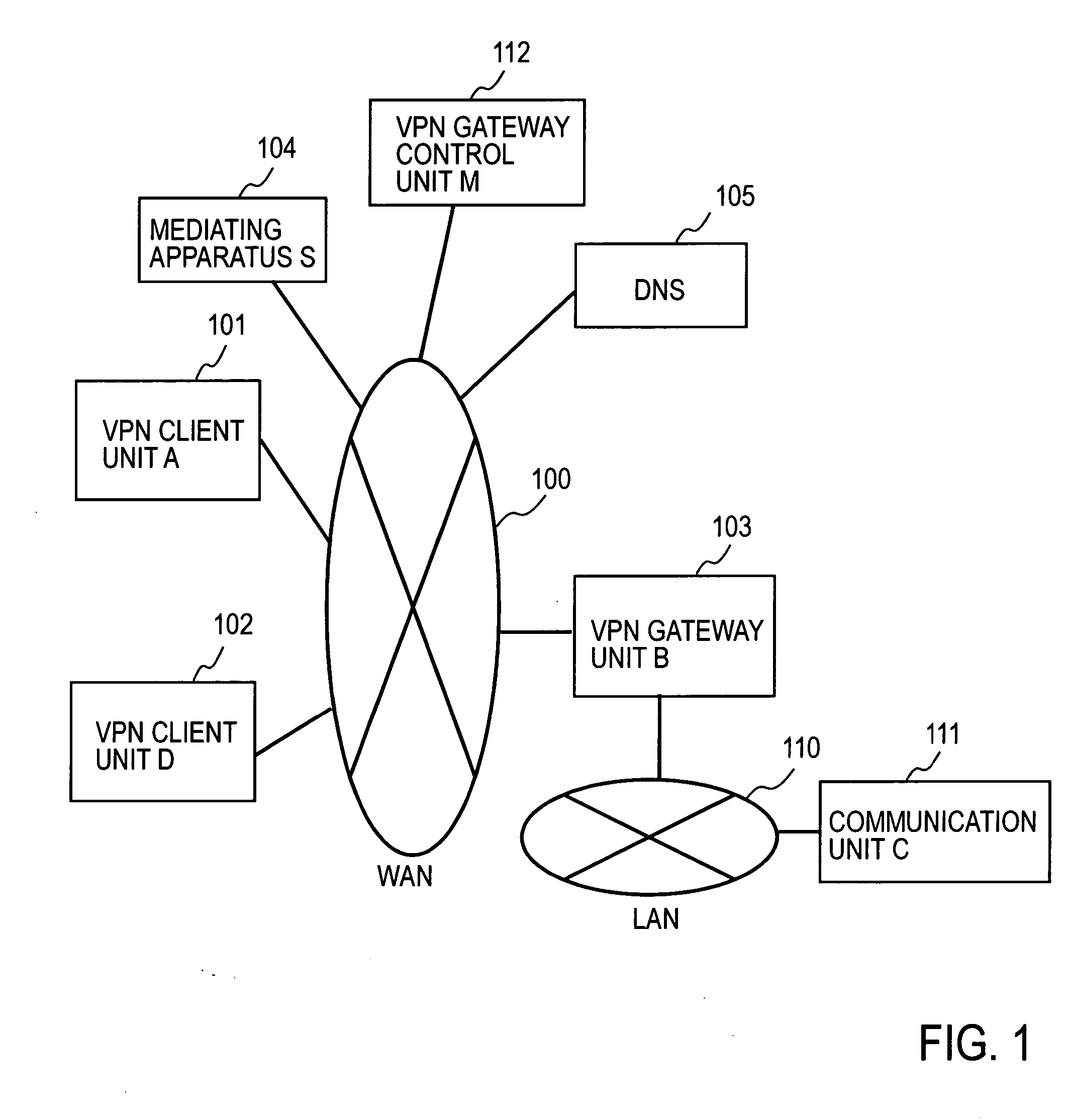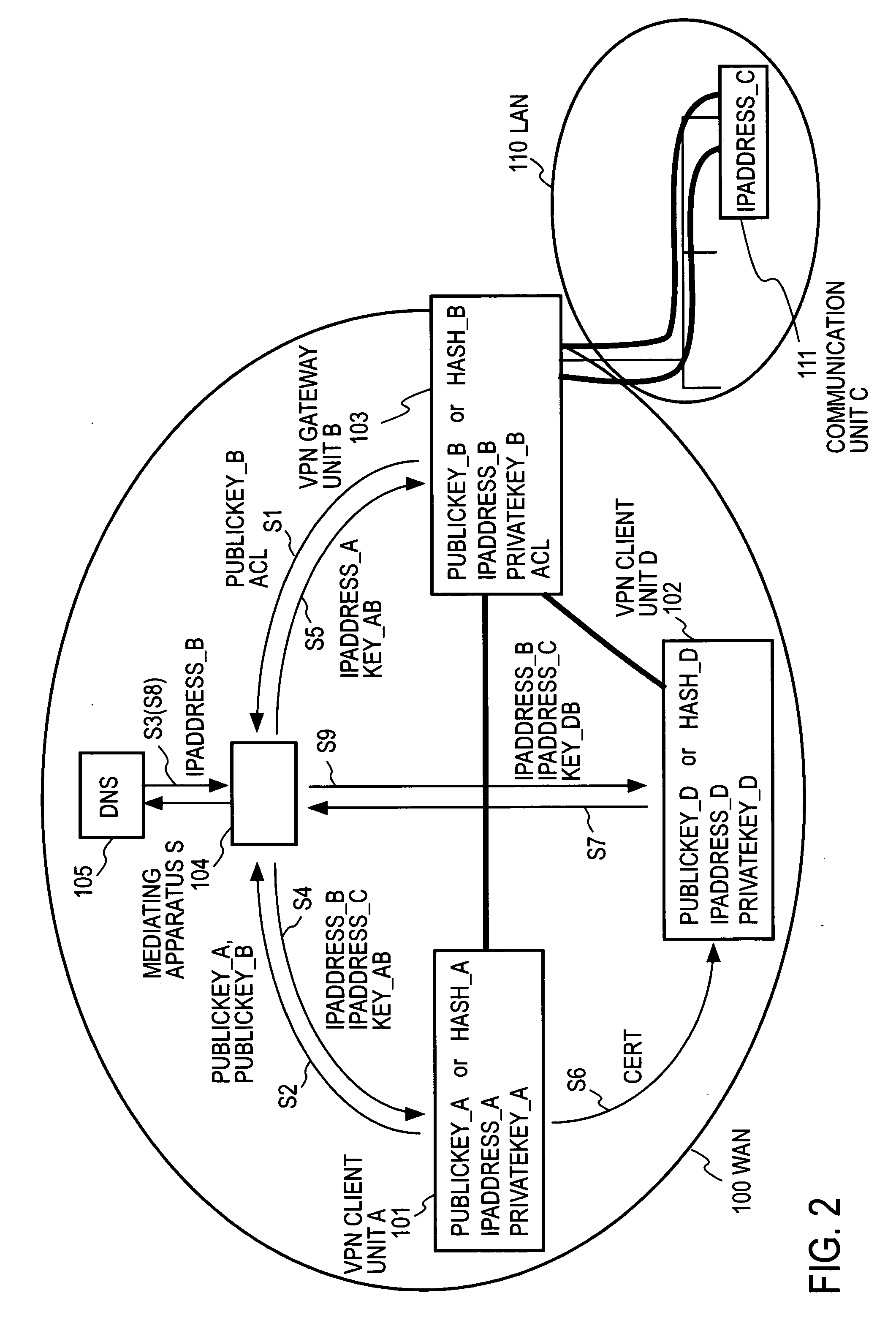Remote access vpn mediation method and mediation device
a remote access vpn and mediation method technology, applied in the field of remote access vpn mediation method and mediation device, can solve the problems of imposing a heavy load not only on the user of the vpn client unit, but also on the vpn administrator, and the burden of user management becomes enormous, and the management of the user becomes a serious burden
- Summary
- Abstract
- Description
- Claims
- Application Information
AI Technical Summary
Benefits of technology
Problems solved by technology
Method used
Image
Examples
embodiment 1
[0067] This is an embodiment in which a mediating apparatus authenticates a VPN client unit and a VPN gateway unit by an SPKI (Simple Public Key Infrastructure) scheme, and the VPN client unit issues a certificate for the delegation of authority. This SPKI scheme does not require an authentication station.
[0068]FIG. 1 illustrates a general system configuration of this embodiment. In FIG. 1 a VPN client unit (A) 101, a VPN client unit (D) 102, a VPN gateway unit (B) 103, a mediating apparatus (S) 104, and a domain name server (DNS) 105 are each connected to a Wide Area Network (WAN) 100 under IP (Internet Protocol). A communication unit (C) 111 is connected to a Local Area Network (LAN) 110 that uses the VPN gateway unit (B) 103 as a gateway unit. On WAN there may also be provided a VPN gateway control unit (M) 112 that has the authority of management of an access control list for the VPN gateway unit (B) 103.
[0069]FIG. 2 is a diagram for explaining the operation of the entire syst...
embodiment 2
[0123] This embodiment further devises the certificate CERT, and provides the certificate CERT in the form of a 0.509-type public key certificate. The basic system configuration of this embodiment is the same as that of Embodiment 1, but an authentication station is required. FIG. 12 illustrates the general system configuration of this embodiment. In FIG. 12 the VPN client unit (A) 101, the VPN gateway unit (B) 103, an authentication station (CA) 106, the domain name server (DNS) 105, and the mediating apparatus (S) 104 are each connected to the network (WAN) 100 under IP (Internet Protocol) control.
[0124]FIG. 13 is a diagram for explaining the operation of the entire system in FIG. 12. The thick lines indicate the remote-access VPN in the IPsec tunnel mode, and the broken lines indicate presentation of the public key certificate CERT to the authentication station (CA) in the authentication in the IKE phase 1. In this embodiment, too, the host name of the VPN client unit (A) 101 is...
embodiment 3
[0159]FIG. 18 illustrates a practical functional configuration of the VPN client unit in Embodiments 1 and 2 described above. The VPN client unit 101 is provided with: a DNS query capture / proxy answer function part 1011 that captures a DNS request from this unit and makes a proxy answer thereto; a mediation-service VPN client function part 1012 that performs a VPN client function of the mediation service of the present invention; and a tunneling protocol function part 1013 for implementing VPN access. Furthermore, there are provided: a mediation service management table 1014 for distinguishing between ordinary DNS queries and mediation services, and for their management; a mediation-service authentication information table 1015 for mutual authentication with a mediation server; and a tunneling / protocol configuration management information table 1016 for encrypted communications with the VPN gateway unit.
[0160] The mediation service management table 1014 has stored therein:
[0161] a...
PUM
 Login to View More
Login to View More Abstract
Description
Claims
Application Information
 Login to View More
Login to View More - R&D
- Intellectual Property
- Life Sciences
- Materials
- Tech Scout
- Unparalleled Data Quality
- Higher Quality Content
- 60% Fewer Hallucinations
Browse by: Latest US Patents, China's latest patents, Technical Efficacy Thesaurus, Application Domain, Technology Topic, Popular Technical Reports.
© 2025 PatSnap. All rights reserved.Legal|Privacy policy|Modern Slavery Act Transparency Statement|Sitemap|About US| Contact US: help@patsnap.com



